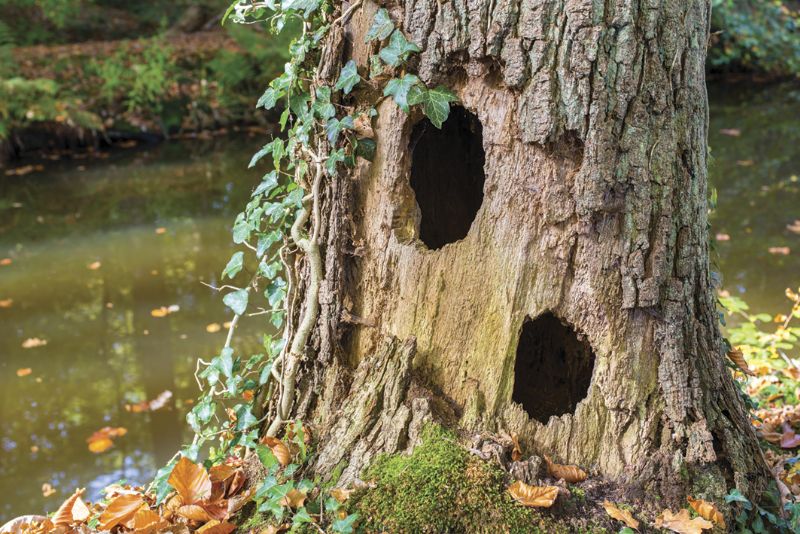- Home
- News, Articles & Reviews
We are hiring! Please click here to join our growing magazine delivery team in Gloucestershire!

Tree hole hideout
All Areas > Pets & Wildlife > Wildlife Matters
Author: Maxine Raggatt, Posted: Wednesday, 28th August 2019, 09:00
As vicious storms strike through our countryside, they often leave a fair bit of destruction. Branches can be ripped from trees at the trunk, leaving a hole from where its leaves once sprung. Holes can also form from fungal attacks and nooks made by the natural growing process.
Devastating as it may sometimes seem, this can be quite useful for wildlife. It is, in fact, these tree holes and fallen branches that can create a new sheltered home for many different species.
Over many decades the tree holes will often increase in size, offering more space for larger species to call home. This is because the trees often continue to grow and change; therefore, the hole changes and adapts with it. Wood-boring insects also play a part by nibbling away at the tree’s new wound, resulting in a size increase.
Ancient woodlands
Tree holes can be found in most large trees, especially those of 50 years and older. Huge beech and oak trees found in ancient woodlands often have the most impressive tree holes, serving up snuggly homes for their wildlife.
Tenants of the hollows
In the early days, smaller inhabitants tend to use tree holes. These can be woodlice, spiders, beetles and centipedes. Water gathers in some holes, which attracts insects that lay aquatic larvae. Bee and hornet nests are also found in these hollows, which can help them set up a good defence against potential predators.
One of the places dormice love to nest in the summer is in tree hollows. They are often small enough to be one of the first inhabitants after a branch has broken off. They later move down to ground level during the autumn to hibernate.
Decades later
As the years go by, bigger species move into the tree hole, although often with high competition to claim it. Birds are usually the next tenants looking for a safe place to lay their eggs. Woodpeckers, however, have the skill to chisel their own homes from scratch. Although it takes considerable effort, they can guarantee a safe nest every year for themselves in dead or dying trees.
Bats also love to take refuge in tree hollows during harsh weather, as they provide a warm place to hibernate. Decades later the holes are finally big enough for a family of kestrels or owls to nest.
It can be a lovely idea to grab a pair of binoculars and set up somewhere to keep a close watch on several tree holes to see who their current occupiers are. Year by year, you may get to see how the tenants and the formation of the tree hole change. Just remember to keep your distance so as not to disturb those living there.Other Images
Copyright © 2025 The Local Answer Limited.
Unauthorized use and/or duplication of this material without express and written permission from this site's author and/or owner is strictly prohibited. Excerpts and links may be used, provided that full and clear credit is given to The Local Answer Limited and thelocalanswer.co.uk with appropriate and specific direction to the original content.More articles you may be interested in...


© 2025 The Local Answer Limited - Registered in England and Wales - Company No. 06929408
Unit H, Churchill Industrial Estate, Churchill Road, Leckhampton, Cheltenham, GL53 7EG - VAT Registration No. 975613000You are leaving the TLA website...
You are now leaving the TLA website and are going to a website that is not operated by us. The Local Answer are not responsible for the content or availability of linked sites, and cannot accept liability if the linked site has been compromised and contains unsuitable images or other content. If you wish to proceed, please click the "Continue" button below:




